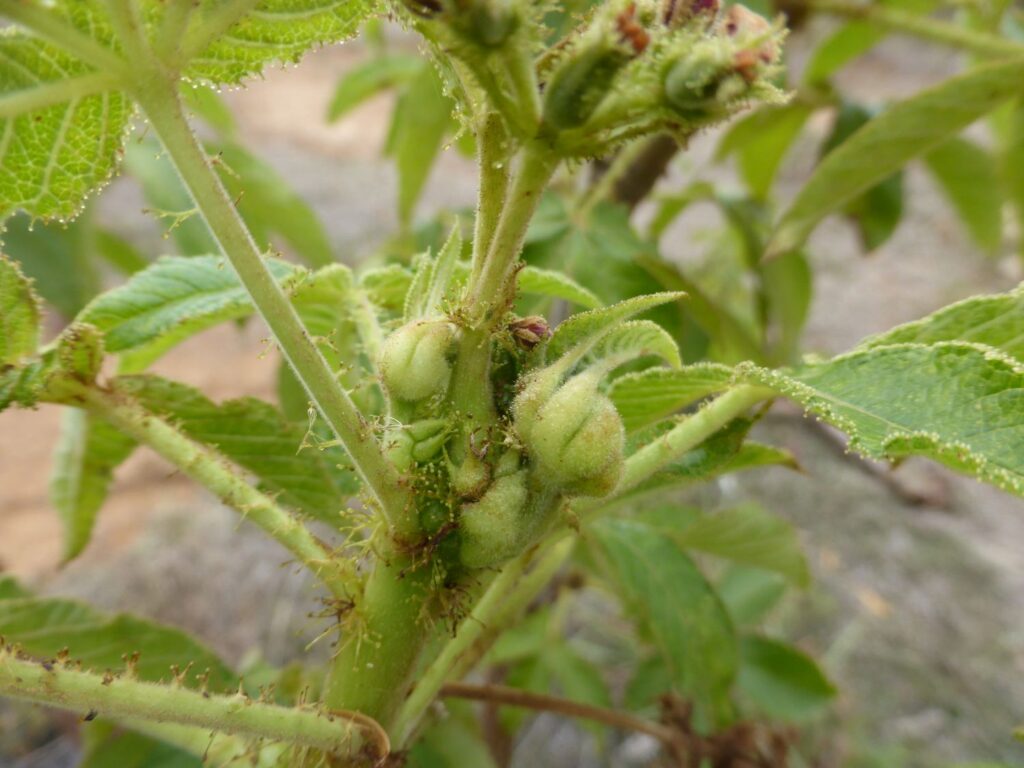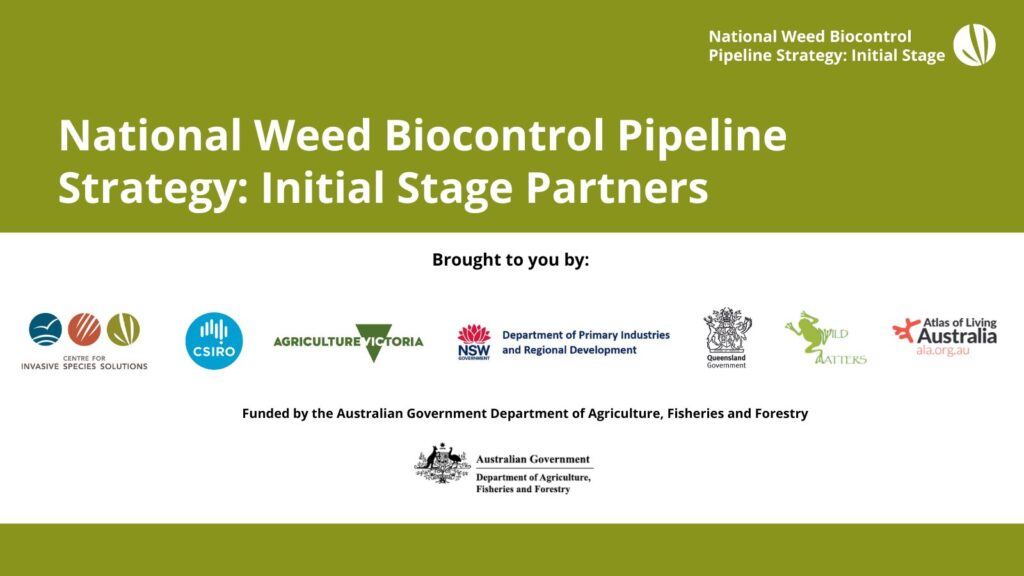Weed biocontrol a compelling return on investment to control our worst weeds
Governments, industry, researchers and community organisations are collectively working to take forward weed biocontrol projects in the fight against weeds, through the National Weed Biocontrol Pipeline Strategy.
The most recent output under this collaborative initiative is the National Weed Biocontrol Investment Report to guide future weed biological control RD&E investment. It maps a five-year, $38 million priority investment pathway for 18 projects targeting 20 priority weed species. The report is part of the National Weed Biocontrol Pipeline Strategy | Initial Stage project, led by the Centre for Invasive Species Solutions, CSIRO and partners funded by governments.
Weeds cost Australia nearly $5 billion annually, threatening ecosystems, waterways, and agricultural productivity. Biocontrol – using natural enemies from a weed’s home range – is a proven, cost-effective solution at landscape-scale which delivers an impressive return on investment (ROI).
A CSIRO biocontrol review found biocontrols deliver annual benefits of $95.3 million from an average annual investment of just $4.3 million, with a ROI exceeding 23:1.
The Centre’s Chief Executive Officer, Shauna Chadlowe says the Investment Report builds on the National Weed Biocontrol Prioritisation Results report, ensuring a transparent and science-based approach to selecting priority weed targets for biological control RD&E activities.
“If funded, each recommended project will progress biocontrol candidates through four key phases: exploration, risk assessment, release and long-term monitoring. By investing in biocontrol, Australia is not only protecting its landscapes, but also securing self-sustaining solutions to weed management at a national scale into the future.”

“The report highlights the value RD&E can bring in protecting Australia’s unique plants, animals and ecosystems from the destructive impacts of weeds.”
“Thirteen weeds have been prioritised for projects to develop new biocontrol agents, while seven weeds require projects to nationally distribute approved agents.”
These include high-impact threats – including 12 Weeds of National Significance – such as Alligator weed, Gorse, and African boxthorn.
The report has been prepared for the Environment and Invasives Committee (EIC) which has oversight for the Australian Weeds Strategy and the National Weed Biocontrol Pipeline Strategy. The report will inform future investment decisions in weed biocontrol.
Case study: Biocontrol for Alligator weed (Alternanthera philoxeroides)
This Weed of National Significance (WoNS) is one of the worst weeds in Australia for invasiveness, potential for spread and both economic and environmental impacts.
Although an aquatic weed, it can invade both land and water (including brackish conditions in mangroves and beach areas) and is difficult to control using traditional methods.
Its impacts on irrigation enterprises are well documented but it can also cause cancerous lesions on the skin of light-pigmented cattle. From an environmental perspective, infestations can displace native flora and increase the risk of flood damage as it blocks drainage channels. Where it impacts waterways used for recreation and tourism, Alligator weed degrades aesthetic values, promotes health problems by creating mosquito habitat and poses dangerous hazards for swimmers.
The National Weed Biocontrol Investment Report maps a five-year biocontrol RD&E plan to develop biocontrol for this species, focusing on the exploration and risk assessment phases. If funded, the work would start with genetic analysis in both its native (South America) and invasive range to direct exploration efforts. Previously identified biocontrol candidates – two leaf-mining fly species (Ophiomyia alternantherae and Ophiomyia buski) as well as the rust Uredo pacensis – would be risk assessed and evaluated for impact, while additional biocontrol candidates would also be scoped. At the end of the five years, the plan envisages at least one candidate agent would be imported into Australian quarantine for potential future release.
About the National Weed Biocontrol Pipeline Strategy | Initial Stage project
The Centre for Invasive Species Solutions (CISS) has partnered with Australia’s national science agency CSIRO, Biosecurity Queensland – Department of Agriculture and Fisheries, Agriculture Victoria, New South Wales Department of Primary Industries and Regional Development, the Atlas of Living Australia, and Wild Matters to collectively lead the project.
Funding has been provided by the Department of Agriculture, Fisheries and Forestry (DAFF) with in-kind support by jurisdictions and CSIRO. The national initiative is guided by the Environment and Invasives Committee (EIC) and aligns with the requirements under the Biosecurity Act 2015 and the Environment Protection and Biodiversity Conservation Act 1999, ensuring rigorous risk assessments and environmental safety.
Prioritised weeds for biocontrol investment consideration
Blue text denotes Weed of National Significance (WoNS)
African boxthorn (Lycium ferocissimum)
Alligator weed (Alternanthera philoxeroides)
Bellyache bush (Jatropha gossypifolia)
Cabomba (Cabomba caroliniana)
Chilean needle grass (Nassella neesiana)
Delta arrowhead (Sagittaria platyphylla)
Dense waterweed (Egeria densa)
Gamba grass (Andropogon gayanus)
Giant reed (Arundo donax)
Gorse (Ulex europaeus)
Grey sallow (Salix cinerea)
Olive hymenachne (Hymenachne amplexicaulis)
Rubber vine and purple rubber vine (Cryptostegia grandiflora and Cryptostegia madagascariensis)
Salvinia (Salvinia molesta)
Sea spurge (Euphorbia paralias)
Siam weed (Chromolaena odorata)
Spinyhead sida and Paddy’s lucerne (Sida acuta and Sida rhombifolia)
Stinking passionflower (Passiflora foetida)
Information and resources
National Weed Biocontrol Pipeline Strategy | Initial Stage project
Weeds Australia | Weed biocontrol hub





